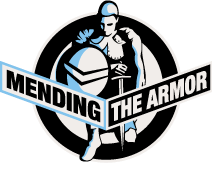A recent CDC study
has estimated that one in five children in America is suffering with a mental
disorder of some type and the need for quality mental health treatment for
youth has never been greater. Because of
the prohibitive cost of residential treatment, more and more youth are being
seen in outpatient clinics and counseling offices as concerned parents seek
help for their children.
A majority of mental health clinics and offices utilize
individual therapy as the primary mode of treatment. Finding therapists that utilize group therapy
is more difficult, despite the known benefits of using group therapy with
youth. Some therapists simply prefer to not work with
teens because of the difficulties involved with engaging a teen in
treatment. Many therapists shy away from
using group therapy because it can be extremely difficult to run effective
group therapy with youth. It takes a
highly skilled therapist to run a good group session with resistant teens.
Listed below are
five benefits for the utilization of group therapy for treating difficult
youth:
1.
Participation in group therapy sessions provides
young people with the realization that they are not alone in their problems and
that others experience similar problems.
Youth often feel alienated from others and experience a great deal of
loneliness. Group therapy provides the
opportunity for youth to feel a sense of belonging and cohesiveness. This allows for youth to develop the skill of
learning to connect and bond with others.
2.
Participation in group therapy creates
opportunities for interpersonal learning by receiving feedback from each other
and experimenting with new ways of relating.
“Group think” can be a powerful tool for helping youth to find new ways
of approaching their problems. This is
an opportunity that simply can’t be duplicated in an individual therapy
setting.
3.
The treatment group setting provides a safe
setting for accountability as the youth report their efforts to manage their unwanted
behaviors. This contradicts the
self-talk of many youth who tend to keep their struggles secret because of the
shame they often feel. Participation in
group reduces the shame and encourages honesty and openness. As youth progress in their treatment, they
are able to begin to give back and help newer group members. This creates self-esteem and self-worth. Group therapy teaches youth to turn to
people instead of addictions and dependencies in their time of need.
4.
Participation in group therapy instills hope to
young people that they can recover from their problems. Senior group members share their successes
with newer group members and group members encourage one another to work to
achieve their goals.
5.
Participation in group therapy is a more
cost-effective way to provide therapy.
Psychotherapy services can be expensive, particularly for those who are
not able to offset the cost with health insurance. Group therapy sessions can be a more
affordable way for parents to assure their child is in treatment each week
without having to pay out of pocket for more expensive individual therapy
sessions.
Therapy Associates is an outpatient clinic located in St.
George, Utah that specializes in the treatment of children, teens and young
adults. Group therapy is a preferred
method of treatment. The clinic provides
group therapy treatment to teens and young adults and runs group therapy sessions
for substance abuse, gaming addiction, adolescent girls’ issues, pornography/sexual
addiction and sexual offenses. See our
website to find out more about our therapeutic services for children, teens and
young adults in the St. George, Utah area.

